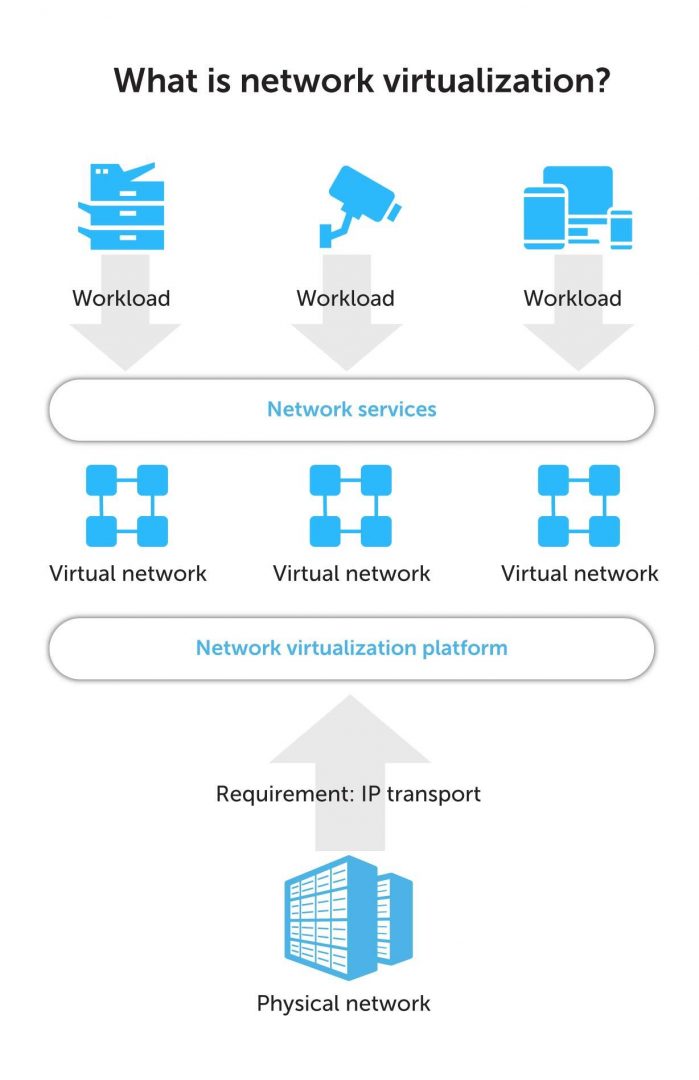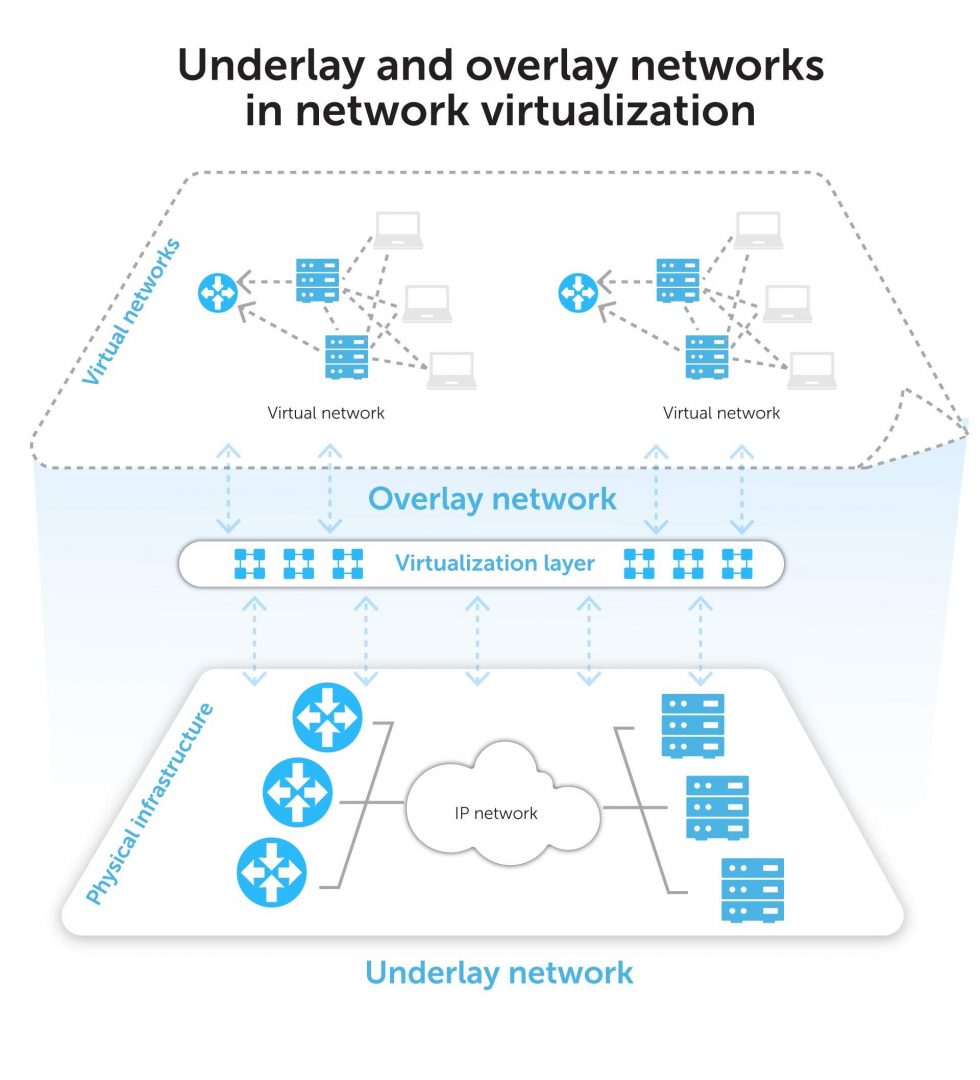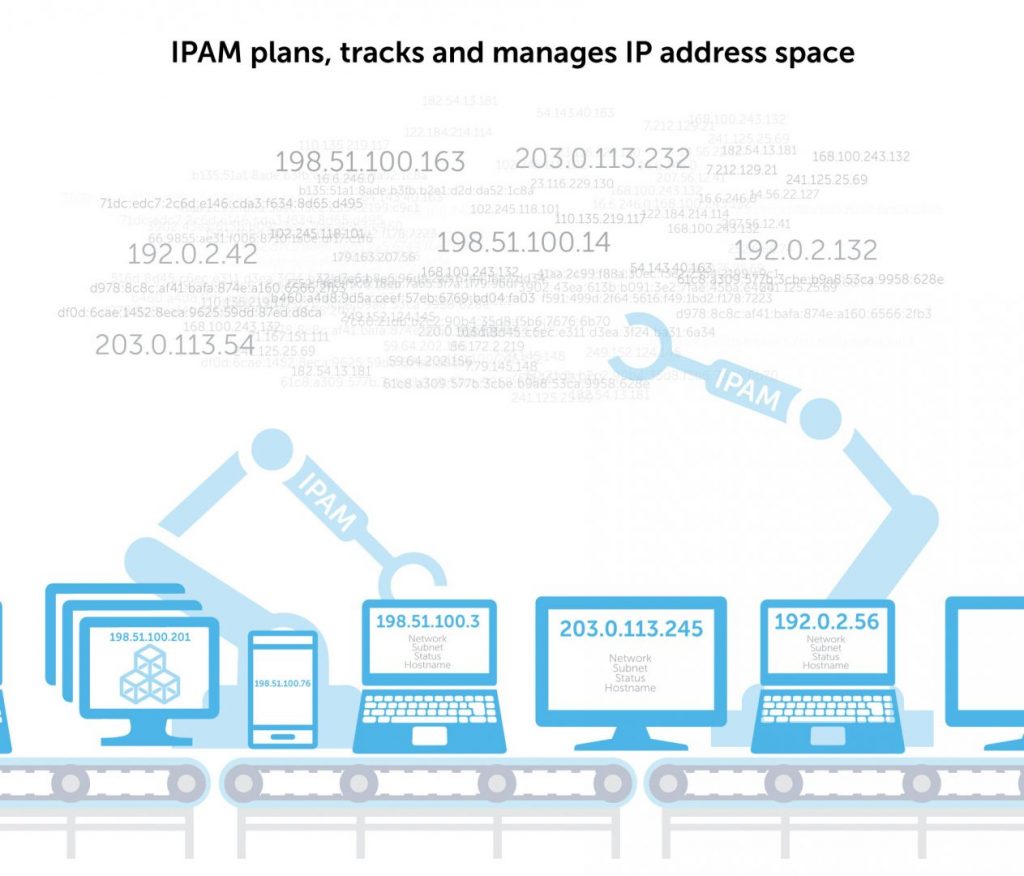Network virtualization needs enterprise-level DNS
Virtualization is part of every network’s DNA. But network virtualization requires an enterprise-grade DNS platform alongside it to be truly successful.

Network virtualization is part of every network’s DNA. With virtualization, admins can provision and configure networks based on policy and business needs instead of routers and switches.
As a result, network teams are delivering more value than ever. A software-defined approach to networking is scalable, efficient, and affordable.
But it’s best not to take the road to network virtualization alone.
Network virtualization never happens in a vacuum. A successful initiative requires close integration with core network infrastructure. To effectively virtualize, you need a DNS platform that provides total visibility and control of your IP address management resources.
In this post, we’ll first define network virtualization and its key concepts. Next, we’ll take a look at some of the benefits of virtualizing your network. Finally, we’ll explore how the BlueCat platform is a crucial partner in your network virtualization efforts.
What is network virtualization?
Network virtualization is basically an extension of the server virtualization you may already have in place. Server virtualization divides up a physical server among several virtual machines. Similarly, network virtualization divides up physical network resources among multiple virtual networks.

Network virtualization abstracts network services and connections traditionally delivered via hardware into multiple virtual overlay networks. They are decoupled from physical networks and run independently on top of them.
There are two broad types of network virtualization: external or internal. External virtualization combines many networks or parts of networks into a virtual unit. On the other hand, internal virtualization provides network-like functionality to software containers on a single physical network server.
A common example of network virtualization is a virtual LAN (VLAN). A VLAN combines network devices (like computers and servers) into one group, even if they are not physically located together. Devices might be grouped together based on a department or user type.
For example, your finance team is spread throughout a building but is assigned the same VLAN to share resources and bandwidth. It is as if they were connected to the same segment of a local network.
Overlay and underlay networks
A key concept of network virtualization is overlay and underlay networks. Let’s take a closer look at each:
An underlay network refers to physical infrastructure—the servers responsible for delivering packets across networks.
An overlay network is a policy-driven virtual network that is built on top of an underlying network infrastructure. The underlay hardware provides a service to the overlay software. The network policy of the overlay software abstracts away the physical hardware of the underlay.

Software-defined networking
You may have also heard of software-defined networking (SDN), a similar virtualization solution. But it’s important to note that it performs a different networking function.
SDN abstracts physical network resources, such as routers and switches, that traditionally control network traffic. SDN uses a single software-based administrative entity called a controller or control plane. This control plane centrally directs network traffic and communicates with the underlying hardware. SDN can control either virtual or physical networks.
In short, it controls packet routing through a network server with software.
The major players
The two major market penetrators for network virtualization are VMware and Cisco.
VMware NSX is a software-only overlay that runs on top of any network hardware. Comparatively, Cisco ACI provides both the underlay fabric and software overlay—a hybrid approach. Some customers use both solutions together.
The benefits of network virtualization
Let’s take a look at some of the benefits of network virtualization:
- Certainly, virtualization reduces IT costs. Far less data center hardware and software to buy.
- It gives you automated and centralized policy management. In short, a programmable network.
- You can place any number of overlay networks on existing hardware. It’s a vast improvement for scaling up.
- It provides flexibility for hardware resources. As a result, admins can utilize existing infrastructure more efficiently.
- Applications can deploy in a fast and automated fashion. Networks adapt to applications and are no longer static.
- You get disaster recovery on the fly. Switch to a back-up virtual machine instantly to keep your network humming while investigating a failure or security breach.
Network virtualization also sets the stage for the next big thing: intent-based networking. This nascent software, which builds on SDN, will add context, learning, and assurance capabilities to your network. Through a central controller, intent can be translated into policies that are automated, consistently applied, and monitored across the network.
BlueCat: A crucial partner for network virtualization
Everything on the stack is interconnected. One part of the network can’t move at light speed if another is going at a snail’s pace. Because of that, network virtualization solutions are only as fast as the IP address assignment process that supports them. The system will only work as fast as the lowest common denominator.
The case for an IPAM platform
Whether virtual or physical, network resources need an automated and orchestrated IP address management (IPAM) platform. (And certainly, the answer isn’t using IP address spreadsheets as a management tool, which puts your network at serious risk.)

Most adjacent solutions in the stack have basic built-in IPAM capabilities. However, they lack the ability to scale and interact with IPAM resources across the enterprise. And they don’t provide a single-pane-of-glass view of all of the IP addresses on your network. Network administrators often demand these features but virtualization vendors overlook them.
Meanwhile, the BlueCat platform offers centralized visibility and automated IP address provisioning.
Further, Cisco ACI and VMware NSX assume that customers will take care of IPAM automation on their own. Our Intelligent Automation feature lets you quickly and easily integrate with Cisco ACI and VMware NSX. When coupled with the BlueCat platform, ACI and NSX function at the level they’re designed for.
A single source of truth
Our platform provides a single source of truth for network management, IP address assignment, and DNS and DHCP deployment. It makes it easy to move dedicated resources to your pools of virtualized server, storage, and networking capacities.
BlueCat is dynamic, open, secure, scalable, and automatable. By allowing you to centrally manage and orchestrate resources, it’s the oil that will keep your virtual network running.




